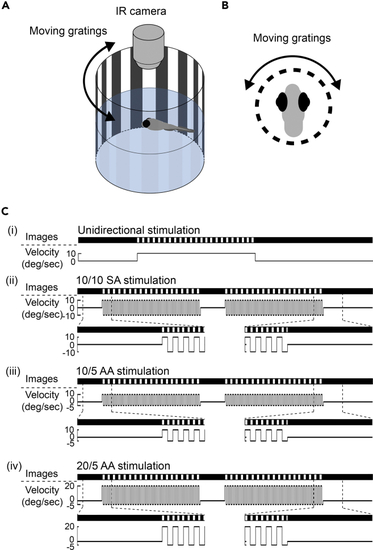Fig. 1
- ID
- ZDB-FIG-230403-10
- Publication
- Lin et al., 2022 - Optokinetic set-point adaptation functions as an internal dynamic calibration mechanism for oculomotor disequilibrium
- Other Figures
- All Figure Page
- Back to All Figure Page
|
Experimental design to elicit optokinetic set-point adaptation in larval zebrafish (A and B) Experimental setup of eye recording in larval zebrafish. Individual larval zebrafish were restrained with agarose and placed in the middle of an optokinetic cylinder. Optokinetic nystagmus (OKN) was elicited by moving gratings projected on the cylinder and recorded by an infrared (IR) camera on top of the fish. (C) From top to bottom, schematic illustrations show optokinetic stimulations with (i) unidirectional +10 deg/sec, (ii) +/−10 deg/sec symmetric alternating (10/10 SA), (iii) +10/−5 deg/sec asymmetric alternating (10/5 AA), and (iv) +20/−5 deg/sec asymmetric alternating (20/5 AA) stimulus velocities. Under all stimulus conditions, a 5-min pre-stimulus dark period and a 10-min post-stimulus dark period were included. Stimulus duration was 10 min for (i) and twice 20 min with a 5-min inter-stimulus dark period for (ii)-(iv). |

